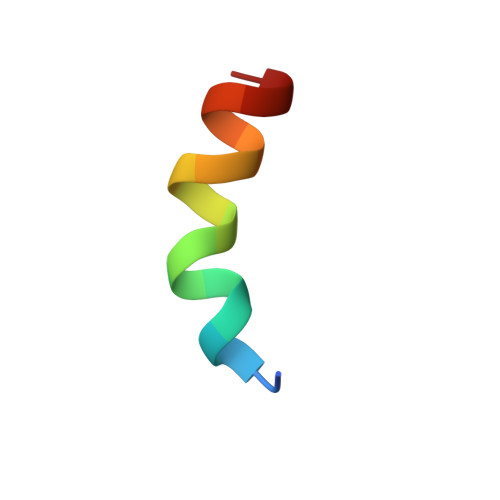Impact of single-residue mutations on the structure and function of ovispirin/novispirin antimicrobial peptides.
Sawai, M.V., Waring, A.J., Kearney, W.R., McCray Jr., P.B., Forsyth, W.R., Lehrer, R.I., Tack, B.F.(2002) Protein Eng 15: 225-232
- PubMed: 11932493
- DOI: https://doi.org/10.1093/protein/15.3.225
- Primary Citation of Related Structures:
1HU5, 1HU6, 1HU7 - PubMed Abstract:
We studied three model antibacterial peptides that resembled the N-terminal 18 amino acids of SMAP-29, an alpha-helical, antimicrobial peptide of sheep. Although the parent compound, ovispirin-1 (KNLRR IIRKI IHIIK KYG), was potently antimicrobial, it was also highly cytotoxic to human epithelial cells and hemolytic for human erythrocytes. Single residue substitutions to ovispirin-1 yielded two substantially less cytotoxic peptides (novispirins), with intact antimicrobial properties. One of these, novispirin G-10, differed from ovispirin-1 only by containing glycine at position 10, instead of isoleucine. The other, novispirin T-7, contained threonine instead of isoleucine at position 7. We determined the three-dimensional solution structures of all three peptides by circular dichroism spectroscopy and two-dimensional nuclear magnetic resonance spectroscopy. Although all retained an amphipathic helical structure in 2,2,2-trifluoroethanol, they manifested subtle fine-structural changes that evidently impacted their activities greatly. These findings show that simple structural modifications can 'fine-tune' an antimicrobial peptide to minimize unwanted cytotoxicity while retaining its desired activity.
Organizational Affiliation:
Department of Microbiology, University of Iowa College of Medicine, Iowa City 52242, USA.














